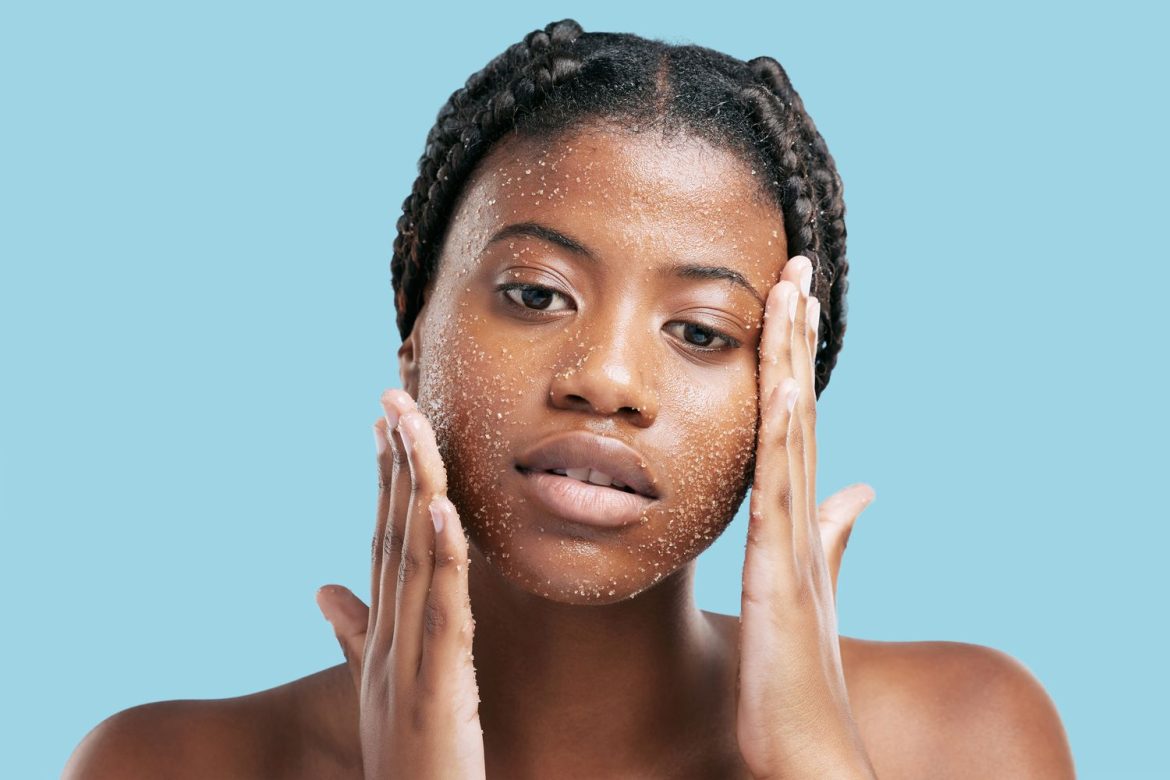Although social media encourages exfoliation, the practice may not be harmless for some people.
Ever since the internet began, tips and videos on how to exfoliate your skin have been appearing to suit all tastes. With the popularity of TikTok , this has only increased. Just search for the word “exfoliate” on the internet to find an explosion of tricks seen by millions of people on the best way to make your skin peel, with the argument that it renews cells. But is this the best way to do it?
According to dermatologist Dr. Claudia Marchal, a member of the American Academy of Dermatology, exfoliation removes the stratum corneum, removing dead cells, debris, epithelial remains, sebum and residues that often adhere to the skin’s surface. Therefore, it is best to perform this process in the fall and winter, as the low incidence of sunlight helps prevent problems that can be caused by this renewal of the skin’s most superficial cells.
In addition, exfoliation helps combat the intense aggressions caused to the skin by the sun during the summer. Exfoliation also makes the skin thinner, softer and more receptive to hydration, which is very important in the winter, when the skin tissue tends to suffer more from dryness.
Which skin types benefit from exfoliation?
Not all skin types benefit from exfoliation. Those who exfoliate need to be careful about how often they exfoliate and whether they use other types of products.According to Dr. Claudia, dry skin does not require exfoliation. “Exfoliants should also not be used on sensitive skin, post-procedure or on the same day as using acids, so as not to irritate or cause contact dermatitis with the acid itself,” the doctor emphasizes. According to the dermatologist, oily, hyperkeratinized, aged skin that is dirty or requires a deeper cleansing with cell renewal action can benefit from exfoliation.Regarding frequency, oily skin needs to be exfoliated twice a week. For normal skin, the process should be done once a week at most to remove dead cells. If the process is done excessively, it can damage the skin barrier.
“One of the functions of the skin is to act as a barrier, a protective layer for our body. Technically speaking, this protective layer is called the stratum corneum, the outermost layer of the epidermis, which serves as a shield, preventing contamination from the external environment with the internal one. However, many lifestyle habits, including the use of inappropriate products, interfere with the skin barrier, weakening the cells and their cohesion, which makes us more susceptible,” explains the doctor. The way in which exfoliation is done can also cause damage to the skin barrier, with the appearance of wounds, pain and even scars. “Another important issue is not to use exfoliants indicated for the body on the face, as body exfoliants have larger particles and heavier vehicles, which can make the skin on the face red, sensitive and more oily,” says the dermatologist.
What to do after exfoliation?
Facial hydration is essential, as the process involves partial removal of the stratum corneum and the hydrolipidic mantle. This results in a loss of the integrity of the skin barrier, which can cause sensitivity, irritation and a rebound effect with abnormal production of fats in physiological response to the aggression suffered.Therefore, the skin should always be moisturized with substances capable of retaining water molecules while providing protective and hygroscopic action.
The chosen vehicle should be suitable for the skin type, ranging from a light serum to a nourishing cream with a high lipid profile.Finally, the doctor reminds us that exfoliants should preferably be applied at night, after cleansing the skin. “The product should be massaged lightly using circular movements. The exfoliant can be left on the skin for two to three minutes, especially if it contains anti-aging or anti-inflammatory active ingredients. Immediately after, it is necessary to remove the exfoliant with water at room temperature.
Once the skin is rinsed, a moisturizer suitable for the skin type should be applied,” she explains. “In general, facial exfoliants should not contain excessively abrasive substances or substances that scratch the skin, so as not to cause micro-cracks that unbalance the integrity of the skin barrier and facilitate the proliferation of microorganisms that cause loss of homeostasis, leading to dermatitis and eczema. Ideally, the exfoliant should have small or medium-sized particles, uniform and preferably of natural origin, such as rice exfoliator and apricot seeds,” she highlights.
For patients with dry or sensitive skin, one option is to use hydrodermabrasion, or Hydrafacial, which is considered an artificial intelligence in skin care. The procedure improves the skin’s glow and hydration, is painless and does not poke or injure the skin. «The platform has several tips, each with a different characteristic, and can remove dirt and oil, including micropollutants that get stuck inside the pores and that we cannot always remove with manual skin cleansing. Beta-hydroxy acids, such as salicylic acid, and alpha-hydroxy acids, such as glycolic acid, are also applied to reduce the thickness of the stratum corneum, which is the first layer of the skin, which prepares the skin to receive the ‘drug delivery’, which will introduce collagen signaling peptides, antioxidants, whitening agents and moisturizing substances into the skin, reaching deeper layers. The experience can be combined with lymphatic drainage, in addition to the use of LED, which will promote a specific anti-inflammatory action and stimulation of ATP, cell energy”, concludes Dr. Claudia Marchal.

